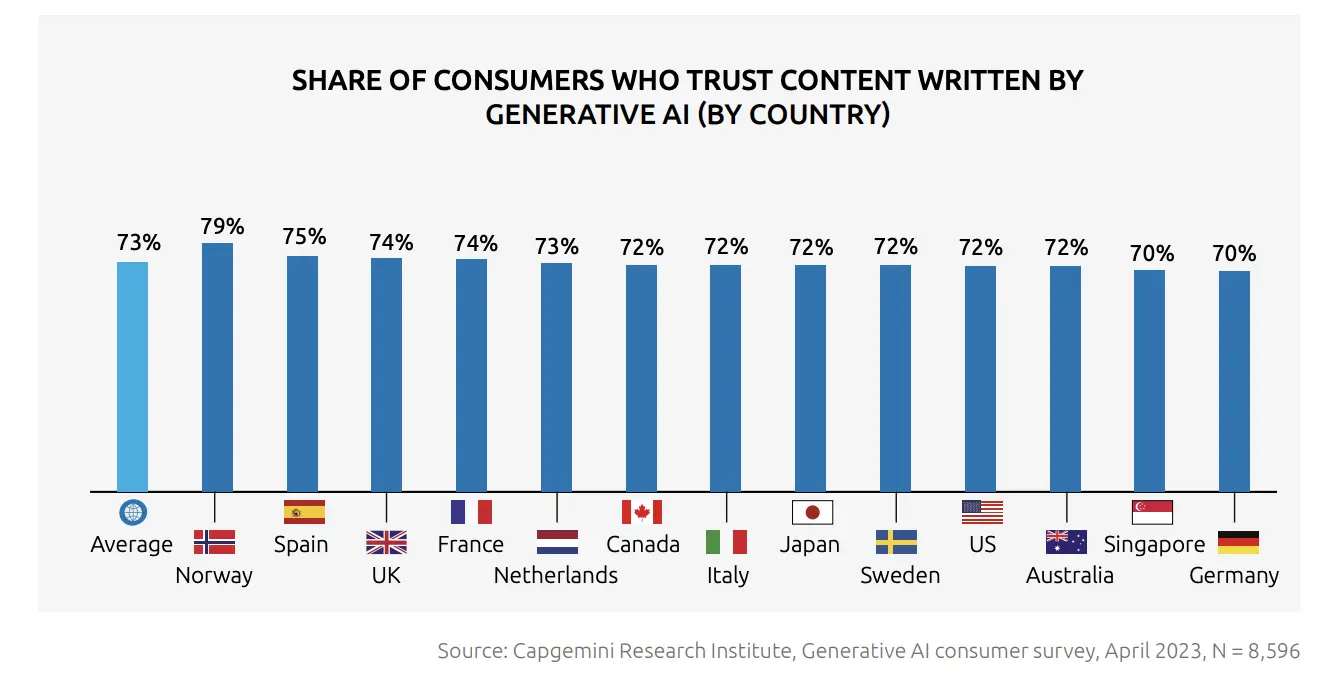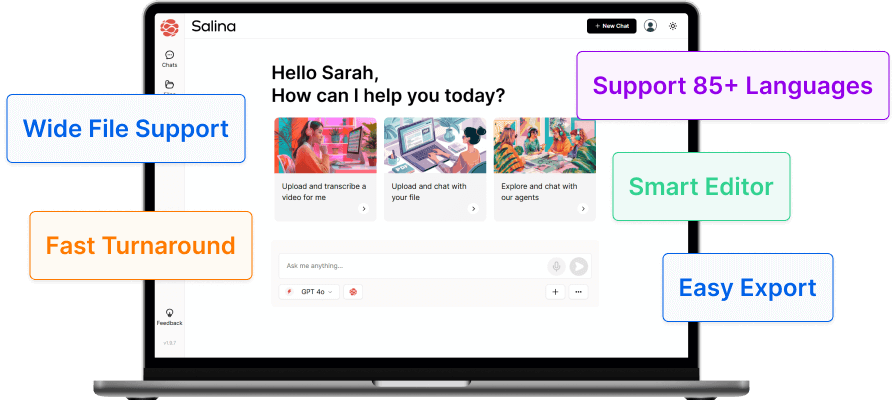Forget about handling research, editing, and countless drafts. AI writing tools can be your secret weapon, simplifying your workflow and allowing you to concentrate on the creative process. Let’s explore how AI writing tools can boost your productivity.
Let’s be honest, cooking can feel like a one-person show. You’re multitasking – chopping veggies, measuring spices, and watching the oven – all while deciphering a recipe that might as well be in a foreign language. That was me last night, facing a chicken cacciatore recipe that felt overwhelming.
Just when I considered dialing for pizza, my phone rang – it was my mom. Aware of my kitchen struggles, she offered to guide me through the recipe, step by step.
With her patient help, everything clicked. She advised starting with the onions, then browning the chicken, sharing tips she’d picked up over the years. Suddenly, that intimidating recipe seemed manageable.
This wasn’t just a quick call; it showed me the value of a hand in the kitchen. Similar to my mom, AI writing tools can assist in content creation. They provide advice, spark ideas, help overcome creative blocks and ultimately boost productivity. Let’s find out how together!
Understanding the Role of AI Writing Tools
Gone are the days of writing as a solo endeavor. With AI writing tools, a writer’s best friend is no longer a dictionary or thesaurus but a machine learning model that understands context, grammar, and intent.
AI isn’t just spell-checkers or thesaurus on steroids; it’s a multifaceted engine that learns from writing habits, suggests improvements, and can even piece together entire paragraphs or articles, with different levels of complexity.
We see in the graph below that there is a 73% global average of consumers who trust content written by generative AI. With this trust, AI truly transforms our relationship with it to the point that we even really on it

The history of AI writing tools is as diverse and varied as the writing process itself. What started as simple spelling and grammar checkers in word processors has evolved to include predictive typing features, smart auto-corrections, and even content generation. Early models might have seemed clunky and prehistoric, but today’s technologies are nudging boundaries between what’s human and what’s machine.
What are AI Writing Tools?
AI writing tools are programs that use artificial intelligence to assist or generate written content. There are essentially two types of AI writing tools:
- Assistive Tools: These provide suggestions, automate editing, and help writers by generating links or formatting.
- Generative Tools: These go beyond assistance and actually create content based on parameters and prompts provided by the user.
How They Work
The magic behind AI writing tools is a combination of Natural Language Processing (NLP) and Machine Learning (ML). NLP allows machines to understand human language, while ML enables these tools to adapt and improve over time.
The key here is data — the more a tool processes, the smarter it gets. Think of it as a never-ending writing workshop with millions of participants, each offering a critique, insight, or perhaps even a new word to ‘learn’. Now that we have a grasp of what these AI writing tools are and how they operate, let’s find out the benefits of actually using them.
The Benefits of AI Writing Tools for Productivity
AI writing tools wouldn’t be making waves if they didn’t offer substantial benefits. Here are a few:
Overall Productivity Boost
With AI writing tools, tasks that would traditionally take hours, such as research or proofreading, are reduced to minutes. This translates to more work done in less time, freeing up writers to focus on what machines can’t do — provide personal and human touches that resonate with readers.
Quality and Consistency
By diminishing human errors and inconsistencies, AI tools ensure your content meets a certain standard. They act as a trusted editor, one that doesn’t get tired or inadvertently replace ‘there’ with ‘their’ due to autocorrect.
While understanding the technicalities and broader benefits of AI writing tools provides a solid foundation, witnessing their application in the real world truly brings their potential to light. In this spirit, we shift our focus to an inspiring example of AI and human creativity working in tandem.
Explore the remarkable journey of Nik Hewitt, a cybersecurity content writer who has harnessed the power of AI to enhance his writing process. His story, detailed in the expert series by Skedler, reveals the synergies between AI creativity and professional writing, demonstrating just how impactful these tools can be when applied thoughtfully and creatively in the field.
His story shows how AI can improve writing efficiency and quality, blending human creativity with technology precision. What impact does this have on writing’s future and creative work? How can writers use these tools to boost creativity and productivity? Let’s delve into these questions further.
7 Ways AI Writing Tools Innovatively Boost Your Productivity
1. Streamlining the Content Creation Process with AI Writing Tools
Automating Brainstorming
AI tools can automatically look for content ideas, trends, and frequently asked questions on the topic. They’re like a round-the-clock brainstorming buddy that never runs out of steam.
Drafting and Outlining
A good AI writing tool can take a mere skeleton of an idea and start building it out into a comprehensive article, complete with headers, sub-headers, a clear structure, and suggested content. This isn’t just about efficiency; it’s about structure, which is the backbone of any good piece of writing.
Here’s a great Reddit post on how someone has incorporated AI into their writing process. Particularly discussing his/her success in creating an outline even just by having a blog post idea in mind. Check out the thread to see how others are responding and whether or not they too have gained success with it.
2. Simplifying Repetitive and Mundane Tasks
A good AI writing tool can take a mere skeleton of an idea and start building it out into a comprehensive article, complete with headers, sub-headers, a clear structure, and suggested content. This isn’t just about efficiency; it’s about structure, which is the backbone of any good piece of writing.
Automating Mundane Tasks
Formatting, citations, sourcing images — these chores can eat into creative time. AI tools are adept at handling the technical aspects of writing, leaving you with the more enjoyable task of actually writing. I always refer to this quote by Anna C Brackett an American philosopher, translator, feminist, and educator which says:
"The more we reduce ourselves to machines in the lower things, the more force we shall set free to use in the higher." – Anna Brackett #Automationquote #Automation pic.twitter.com/gFQIuzqhuI
— AMS (@amsmachines) September 20, 2022
Custom Templates
An often overlooked feature of AI writing tools is their ability to create custom templates. If there’s a particular format or structure you use frequently, why start from scratch every time? These templates can simplify and speed up the process of starting a new piece of content.
Christoffer Noring, a Senior Cloud Advocate at Microsoft and an author of multiple books on web development emphasizes the importance of structured writing. By leveraging AI tools, like he does, anyone can enhance their writing process. Discover more insights in the article he posted on LinkedIn.
3. Enhancing Writing Efficiency with Advanced Features
Feature-Rich Tools
Aside from the usual grammar and spell-checks, AI writing tools today offer an abundance of advanced features. From suggesting alternate word choices based on tone to identifying instances of passive voice, these tools are rapidly becoming comprehensive writing assistants.
Integration Capabilities
AI writing tools are hardly standalone entities; they integrate seamlessly with other apps and platforms. You can start writing in one tool, generate content with another, and publish through a third, all without juggling multiple tabs and mental processes.
4. Leveraging AI-Powered Tools for Grammar and Language Correction
Beyond Simple Grammar Checks
AI writing tools use advanced language models such as OpenAI’s GPT to correct grammar in context. They don’t just look for ‘red underlines’— they aim to simplify and clarify writing by suggesting changes that respect the context.
A Reddit poll in the r/writers community found that most participants mainly use AI for grammar help, indicating many haven’t fully tapped into its creative potential. This blog aims to uncover and discuss AI’s broader capabilities. This is why we don’t stop here in terms of demonstrating how it can greatly improve the writing process beyond just correcting errors. Check out the thread for various perspectives on AI’s role in creative writing below.
Learning from Corrections
The brilliance of AI writing tools is their ability to improve — they learn and adapt to the changes made by the user. Over time, the AI gets better at predicting and suggesting solutions, becoming more attuned to a specific writer’s style and preferences.
5. Unlocking New Creative Possibilities with AI Writing Tools
Inspiring Creativity
AI tools don’t replace creativity; they augment it. Suggestive tools can propose fresh angles on a topic, while generative AI can act as a muse, helping to unblock writer’s block or simply challenge conventional thinking.
Overcoming Writer’s Block
It happens to the best of us. The words don’t flow, and the cursor blinks mockingly, daring you to write something. AI tools can act as a partner in this dance, pushing you along and prompting you with steps when you falter.
6. Optimizing Content with AI Writing Tools for Better Results
SEO Enhancement
SEO is the lifeblood of digital content, and AI can assist here too. Tools can suggest keywords, optimize meta descriptions, and help structure content for higher rankings and visibility in search engine algorithms.
Content Refinement
Good writing is as much about what you don’t say as what you do. AI tools can help distill information, ensuring your content is as sharp, clear, and impactful as possible.
7. Enhancing the User Experience with AI Writing Tools in Marketing
Marketing Content Creation
Marketing content often requires a delicate balance between creativity and data-driven insights. AI can generate landing page copy, email marketing content, or even social media posts, keeping your messaging consistent and compelling across various channels.
Personalized Content
AI tools are the coal for the locomotive of personalization. By analyzing customer data and providing insights, they can tailor each piece of content to specific audience segments, ensuring higher relevance and engagement.
Introducing an innovative approach to content creation, Forbes CZ’s experience underscores the transformative power of AI in enhancing user engagement and revenue through marketing content. Andrea Steiner, the Chief Product Officer, emphasizes the significant impact AI has had on their operations.
“We’re seeing greater performance benefits from the AI system than the editors’ manual recommendations,” says Steiner. “In the first month, it managed to increase the number of page views per visit by approximately 20-25%. The increased page views can also generate greater advertising revenue.”
This statement highlights AI’s capability to merge creativity with data analytics for superior content strategy. Explore more about Forbes’s journey with AI here:

AI Writing Tool Recommendations
Exploring AI writing tools offers a variety of options for different writing needs, like sparking creativity, refining grammar, and boosting SEO. Below are top recommendations to enhance your writing efficiency, effectiveness, and overall productivity.
Content Creation and Brainstorming
Jasper: Ideal for easily crafting detailed articles, captivating blog posts, and a range of content using basic outlines or prompts. Whether you want to simplify your writing process or enhance content creation efficiency, this tool makes a significant impact.
Simplifying Repetitive Tasks
Grammarly: Although not a pure AI tool, Grammarly significantly benefits from AI integrations for automating citation formatting and providing style suggestions, enhancing its grammar-checking capabilities.
Advanced Writing Features
ProWritingAid: Provides comprehensive editing feedback, covering various aspects such as style enhancements, readability improvements, and identification of passive voice constructions.
Grammar and Language Correction
Hemingway Editor: While Hemingway Editor is not solely an AI tool, it integrates AI-driven techniques to simplify and strengthen writing, focusing on improving clarity and impact.
Creative Possibilities
ShortlyAI: Great for breaking through writer’s block, these creative writing prompts and suggestions provide a wonderful source of inspiration and ideas to fuel your imagination and enhance your writing process.
SEO Optimization
Surfer SEO: Offers comprehensive keyword suggestions and expertly crafted content structure recommendations to enhance SEO optimization strategies effectively.
Marketing Content Creation
Copy.ai: Use Copy.ai to easily generate effective marketing content for different platforms. Craft engaging emails and captivating social media posts tailored to specific audience segments.
Related Content:
Key Takeaways
- AI writing tools boost creativity and efficiency, tackling writer’s block and offering fresh perspectives.
- AI optimization enhances SEO, boosting digital content visibility and impact on search rankings.
- AI in marketing boosts user engagement and personalization, improving relevance and performance metrics.
- Real-world examples like Forbes CZ’s AI use show benefits in increasing page views and ad revenue through smarter content strategies.
- Various AI writing tools cater to diverse needs, from content creation to SEO and marketing, showcasing AI’s versatility in enhancing writing processes.
What’s Next
The future of AI writing tools is full of excitement and uncertainty. From groundbreaking models like OpenAI’s GPT to emerging contenders in the AI landscape, we have only just begun to explore their potential. It’s essential to focus not just on the tools themselves, but on how we use them strategically. While the pen has long been considered mightier than the sword, with AI as its ally, it’s ready to conquer even the new digital frontiers.




